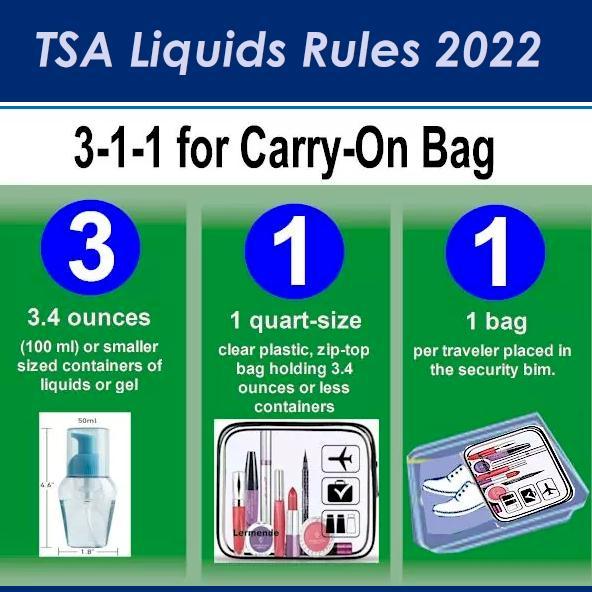Table of Contents
- Understanding Airline Regulations on Pepper Spray Transportation
- Safety Considerations and Legal Restrictions When Flying with Pepper Spray
- Packing and Declaration Tips for Carrying Pepper Spray on a Plane
- Alternatives to Pepper Spray for Personal Safety During Air Travel
- The Conclusion
Understanding Airline Regulations on Pepper Spray Transportation
When it comes to traveling with self-defense items like pepper spray, airlines maintain strict regulations grounded in safety concerns and legal restrictions. Most commercial airlines prohibit carrying pepper spray in checked baggage due to its classification as a hazardous material. However, some carriers allow small containers in carry-on bags provided they meet specific size and composition limits, usually capped at less than 2 ounces. Passengers must declare these items during the check-in process, as undisclosed pepper spray can lead to confiscation or fines. Additionally, airlines often require that the spray mechanism be securely capped or rendered inoperable to prevent accidental discharge.
It’s also important to note the variety of state and country regulations that influence airline rules. While some regions permit pepper spray possession, others impose outright bans or require permits. This patchwork of laws means that travelers should thoroughly research both departure and arrival destinations to avoid legal trouble. Airlines usually reference guidelines set forth by authorities such as the TSA or international aviation bodies, but responsibility ultimately lies with the passenger to comply with all applicable laws. Keeping pepper spray accessible and packaged according to airline instructions ensures not only compliance but peace of mind throughout your journey.
- Check size limits: Often less than 2 ounces allowed.
- Declare at check-in: Never carry pepper spray without informing airline staff.
- Secure packaging: Caps or disabling mechanisms required.
- Understand local laws: Regulations vary widely by jurisdiction.
Safety Considerations and Legal Restrictions When Flying with Pepper Spray
Understanding the safety protocols surrounding pepper spray is critical before packing it for air travel. Airlines and security agencies enforce strict rules due to the potential hazards associated with carrying irritant sprays. Pepper spray is classified as a hazardous material, and in many cases, it’s prohibited in carry-on luggage. When allowed in checked baggage, it often must meet specific conditions such as container size limits-typically under 4 ounces-and having a safety mechanism to prevent accidental discharge. Always check the most current Transportation Security Administration (TSA) guidelines or your airline’s policies to avoid unexpected confiscation at security checkpoints.
Legal restrictions also vary significantly by destination, adding an essential layer of complexity. Many states and countries have stringent laws governing possession, purchase, and transportation of pepper spray, including outright bans or limits on concentration levels. Traveling internationally? Research both your departure and arrival locations thoroughly. Ignorance of local laws can lead to hefty fines, criminal charges, or denial of boarding. To ensure compliance, consider these key points:
- Verify permitted container sizes and volumes.
- Confirm if pepper spray is allowed in carry-on or just checked baggage.
- Understand the legal status of pepper spray at your destination.
- Maintain safety locks on the canister to prevent accidental discharge.
Packing and Declaration Tips for Carrying Pepper Spray on a Plane
When preparing to travel with pepper spray, first verify the specific airline and TSA regulations, as policies can vary significantly. Generally, pepper spray is categorized under hazardous materials and is prohibited in both carry-on and checked luggage on commercial flights. However, some airlines may allow self-defense sprays with strict limitations on size – typically a container no larger than 2 ounces with less than 10% of the active ingredient. Always carry documentation detailing the spray’s contents and compliance standards to avoid complications during security screening.
To optimize safety and ensure smooth passage through airport security, pack pepper spray securely in its original packaging, which clearly states the product’s capacity and active ingredients. Consider placing it in a transparent resealable bag for added visibility. If you’re traveling to or from regions with differing regulations, research and declare the item explicitly at check-in. Avoid hiding or mislabeling the item, as discovery during screening can lead to confiscation or fines. Following these steps helps maintain transparency and protects you from unexpected travel disruptions.
Alternatives to Pepper Spray for Personal Safety During Air Travel
When pepper spray is off-limits during flights, travelers should consider other effective means of protection that comply with airline policies. Personal safety alarms are excellent non-violent deterrents, emitting loud sounds to attract attention and discourage potential threats. Compact and easy to carry, these devices fit seamlessly into carry-on bags or pockets without causing security concerns. Additionally, self-defense keychains, such as kubotans or tactical pens, provide discreet and practical options, empowering passengers to protect themselves without risking confiscation or fines.
Another overlooked but valuable tool is awareness-based strategies. Staying vigilant and planning seating arrangements near flight crew areas can enhance security when physical tools fall short. Complement this with basic self-defense training, which strengthens confidence and readiness to respond effectively in unpredictable situations. By integrating these alternatives, travelers maintain peace of mind without violating strict airline regulations.
The Conclusion
In the end, while pepper spray can be a valuable tool for personal safety, navigating airline regulations is essential before you pack it in your carry-on. Understanding the specific rules set by airlines and security agencies helps ensure a smooth travel experience without unwanted surprises at the checkpoint. Always check the latest guidelines, declare your items if required, and consider alternative self-defense options approved for air travel. Staying informed empowers you to prioritize safety both on and off the plane-because peace of mind should always be part of your journey. Safe travels!Check Our Other Blogs
- StunGun – Your Trusted Source for Stun Guns, Laws, and Self-Defense Tips
- PepperSprayLaws – Your Trusted Resource for Pepper Spray Information
- StunGunLaws – Your Trusted Guide to Stun Gun Legality and Safety




